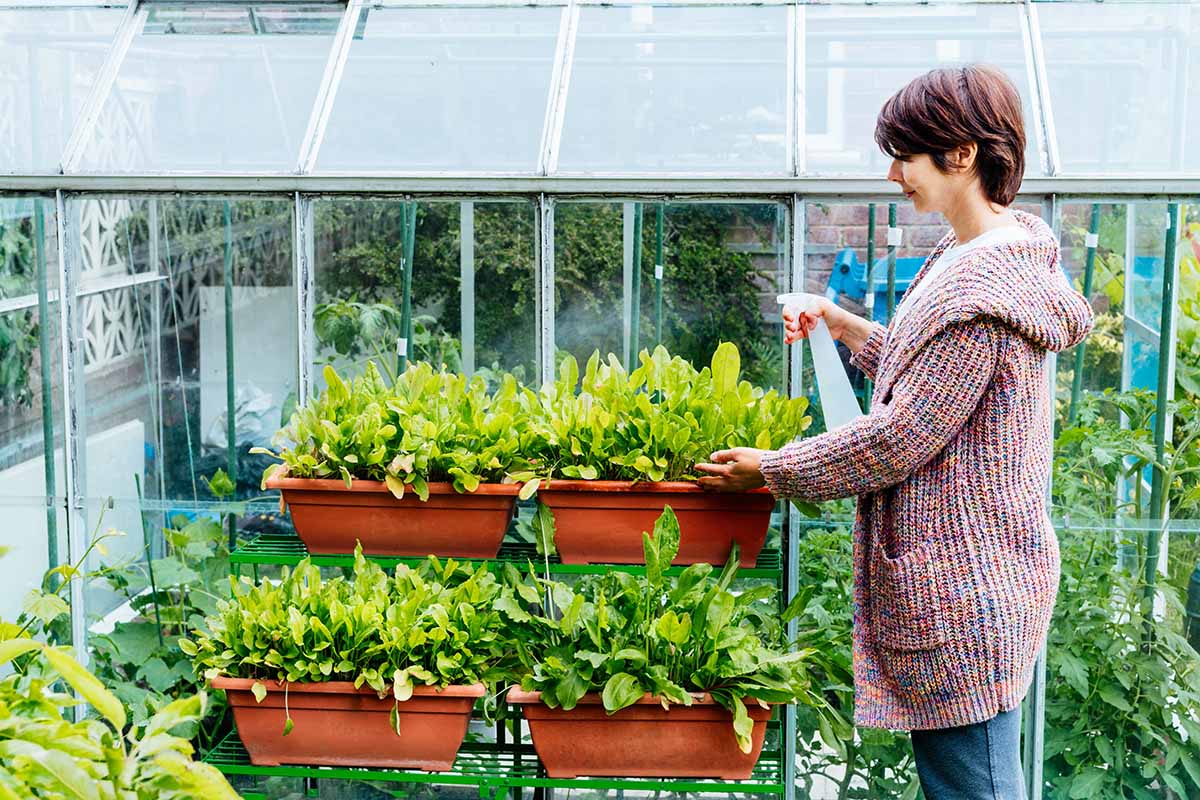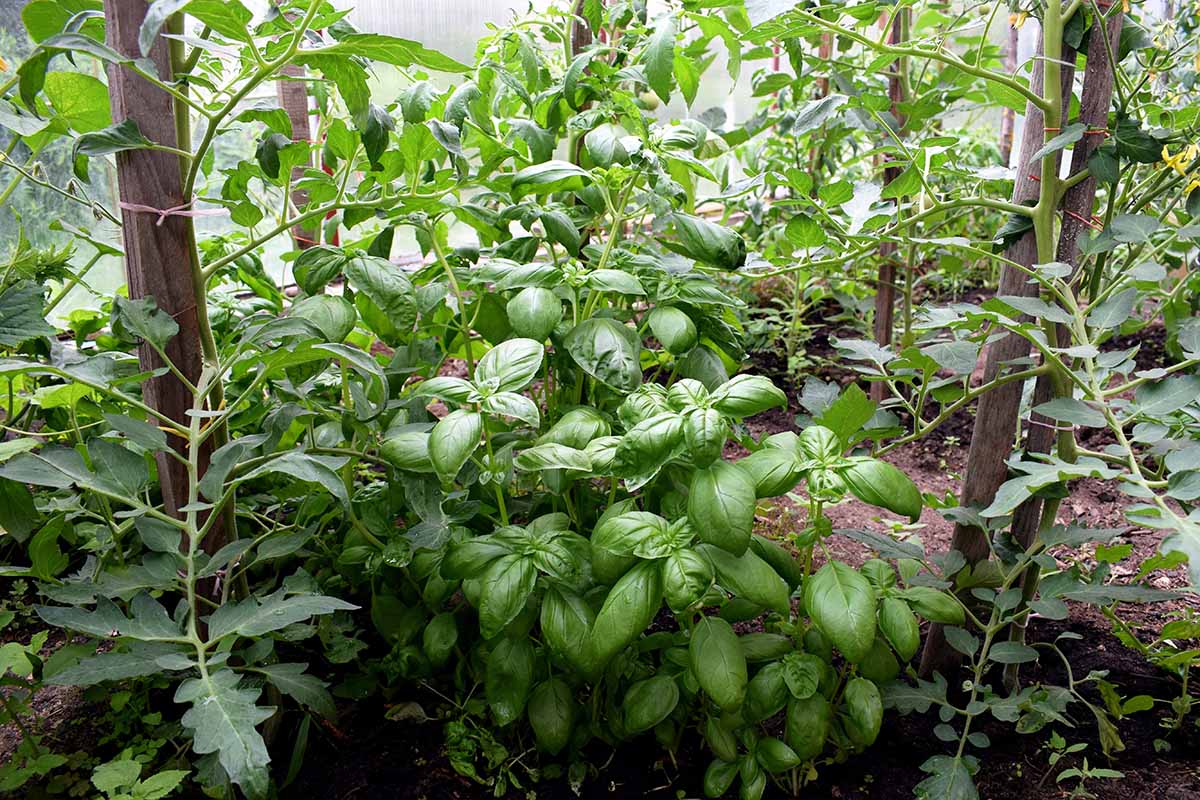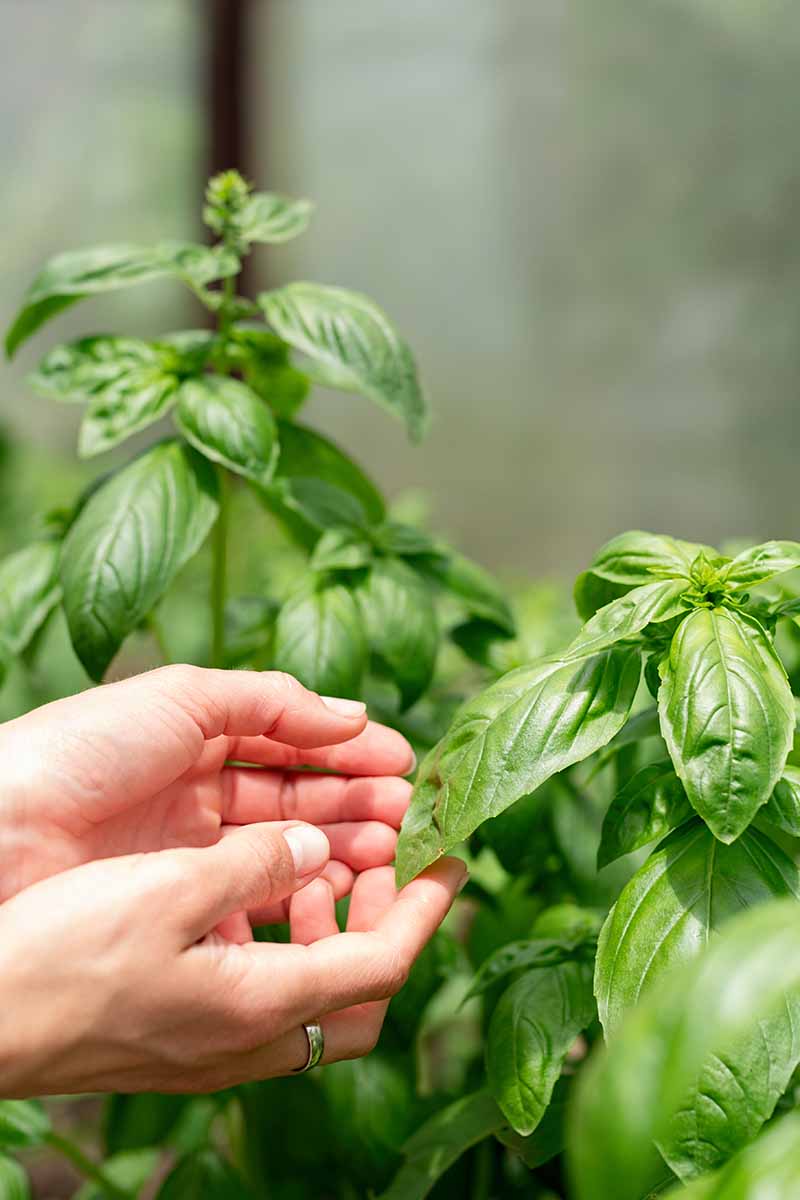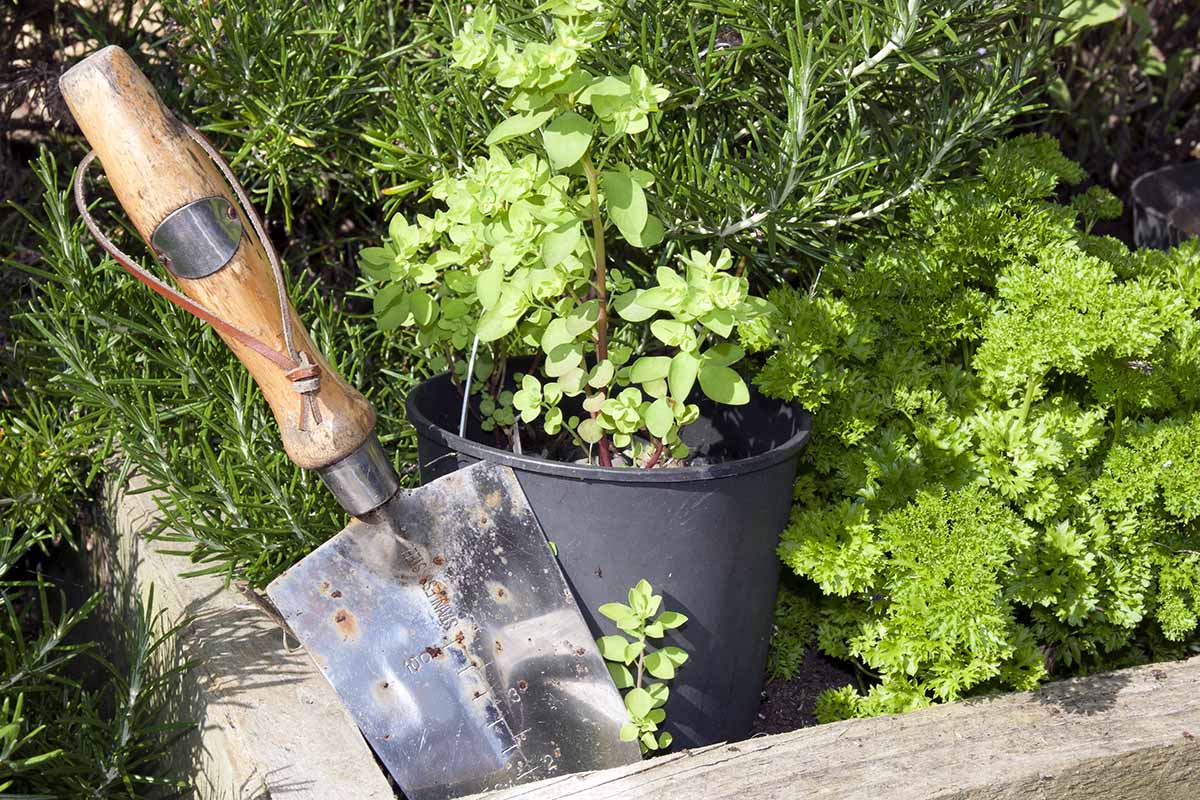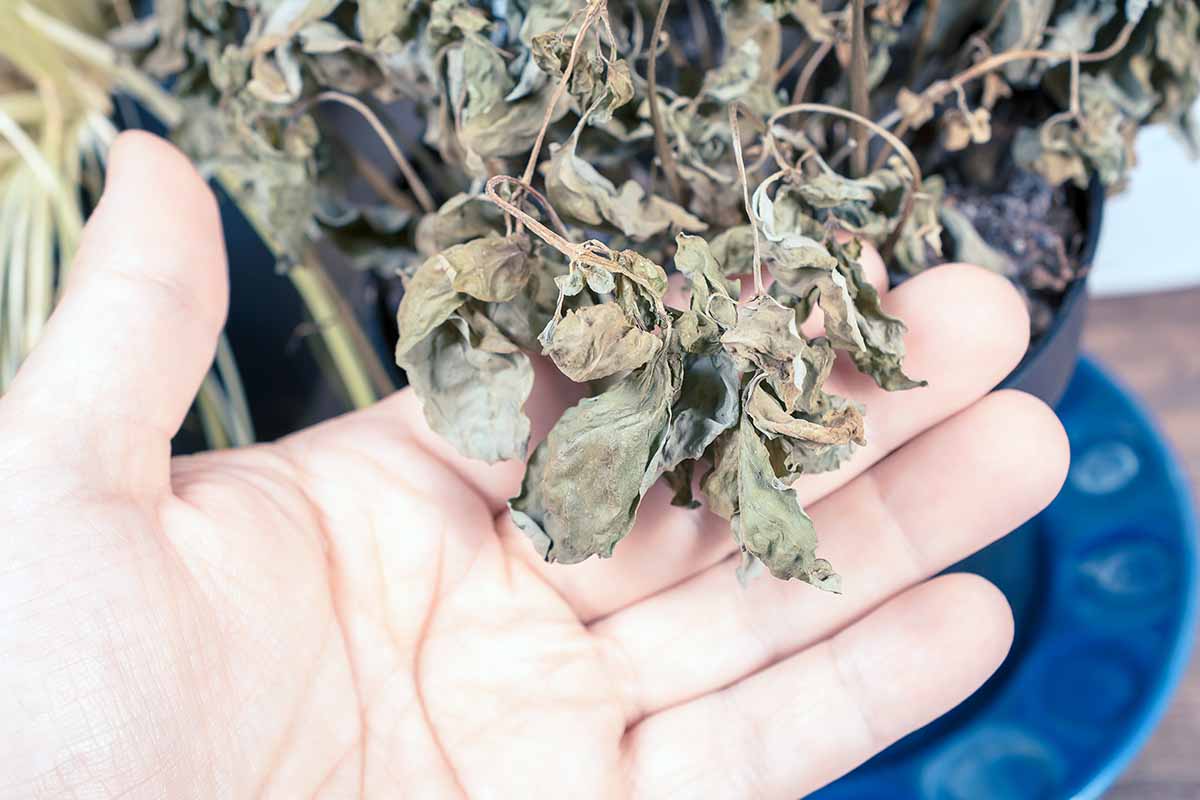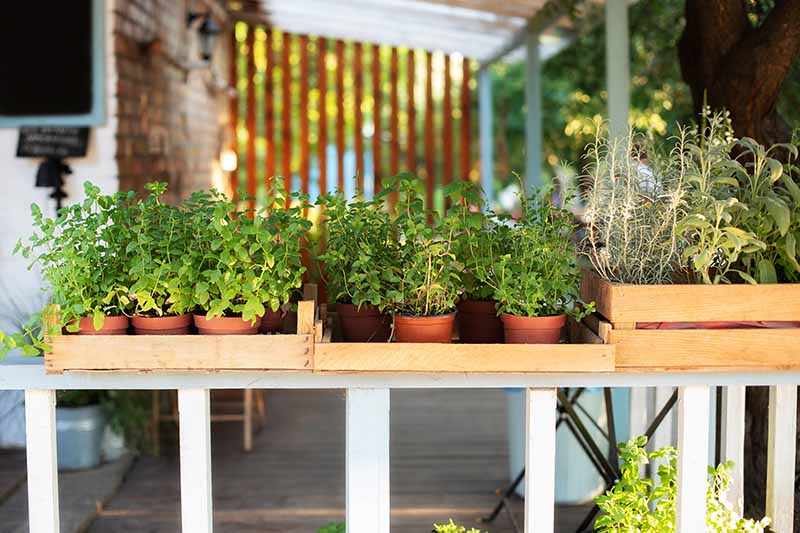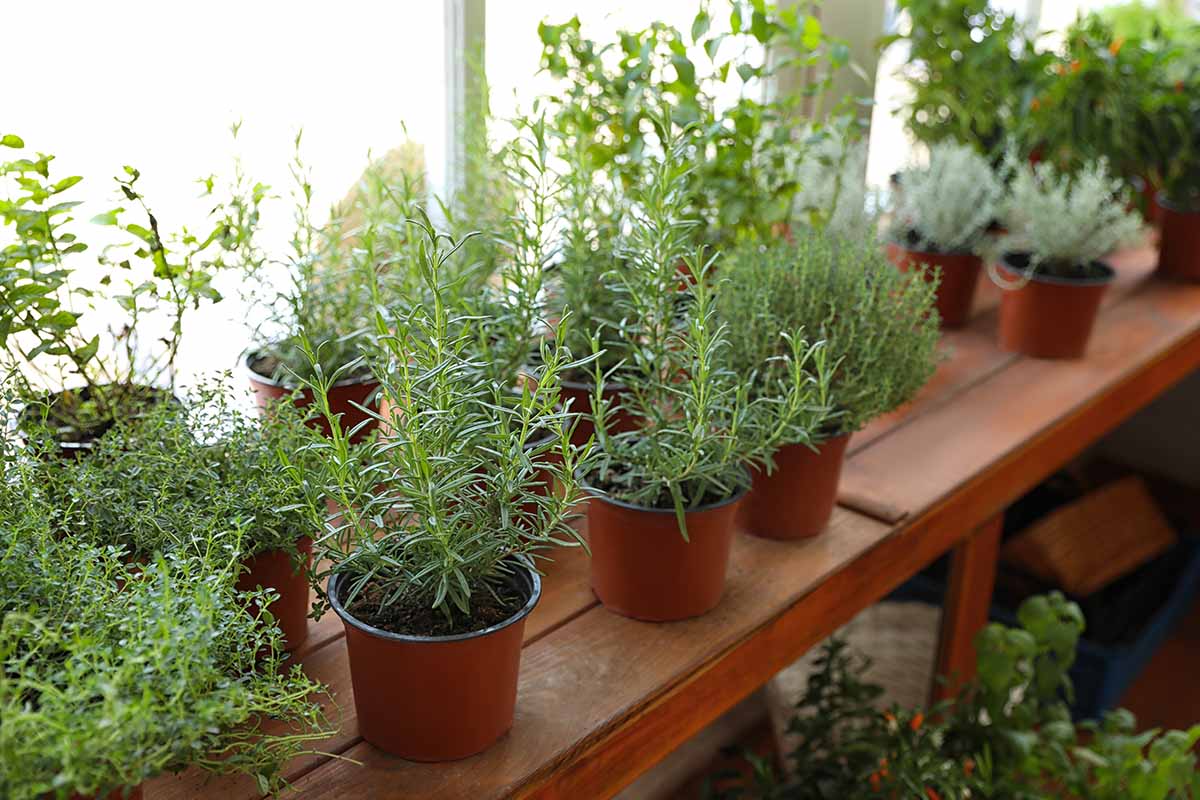Does that mean we have to resign ourselves to eggs with dried chives and cucumber basil salad sans the basil during the winter? Heck no! If you have a greenhouse, or you’re thinking of constructing one, put it to work growing herbs year-round. We link to vendors to help you find relevant products. If you buy from one of our links, we may earn a commission. If you choose a pre-made one or you already have access to one, you’re in for some pretty smooth sailing. There are just a few things to know, and to that end, here’s what we’ll cover coming up: Before we jump in, I want to clarify a few terms. When we say “greenhouse” as it applies in this guide, we’re talking about the traditional shed-like structure covered in clear glass or plastic – as well as high tunnels. The main difference is that high tunnels are tall enough to drive machinery into and they’re more portable. High tunnels may provide slightly less protection than a true greenhouse. Otherwise, these are interchangeable for our purposes. Low tunnels, hoop houses, and frost cloth are different beasts altogether, and those aren’t covered here. While you can use a greenhouse to grow herbs during the spring and summer, the tips here primarily focus on fall and winter growing, since that’s when many of us need our greenhouses the most.
Why Use a Greenhouse to Grow Herbs?
Greenhouses provide gardeners with better control over the growing environment. Where I live, the growing season depends entirely on how much rain we receive. One spring we might only have a few good weeks of growing even if temperatures are right for planting, while a different year might be ideal for planting starting in March with a good amount of light, consistent precipitation. Gardeners in other areas struggle with semi-regular late freezes or super early snow. But if you’re growing in a structure, you can shelter plants from unwelcome rain, unexpected freezes, or piles of snow. If you add grow lights, you can control the amount of exposure your plants receive. Shades can protect plants from the heat of late summer. A greenhouse can increase the ambient temperature compared to the conditions outside by 10°F or more. A double-layer tunnel or insulated, double-pane greenhouse can be up to 25°F warmer than the outdoors! And that’s without adding additional heat, which not only allows you to extend the growing season significantly, but people who live in areas with cool summers can grow plants like peppers and tomatoes, which thrive in the heat. Most herbs will stay green all winter long if you keep them in a greenhouse and you can harvest them year-round. Think of digging into a salad that includes fresh fennel and parsley even in the deepest, darkest days of winter. Or newly-plucked sprigs of rosemary and big bay leaves to enjoy at your holiday feast. Ideal summer options include rosemary (Salvia rosmarinus), sage (S. officinalis), lemon verbena (Aloysia citrodora), thyme (Thymus spp.), and bay (Laurus nobilis). For instance, many materials commonly used in greenhouses or high tunnels reduce the amount of UVB light that reaches plants and this can reduce the quantities of certain compounds in plants that we want more of, like those that act as antioxidants or that improve flavor. If you’re just constructing your greenhouse, choose a UV-Open product, if possible. Be Cool Solutions IRAC MAX Greenhouse Film Greenhouses also tend to be humid and that can lead to some fungal issues. It’s not the end of the world, just keep an eye out for any signs of disease like yellowing leaves and fungal spores on the stems or leaves of your herbs.
Species That Work Best
Herbs are fantastic because so many of them are easy-going, adaptable plants that are happy in your house, in a garden, or in a greenhouse. While just about any herb can do well in a greenhouse, some species do better than others. These plants can benefit from growing in a greenhouse not just because it will keep them warm in the winter, but they’ll appreciate the extra heat if you live somewhere that doesn’t get hot in the summer like the Upper Midwest or the Pacific Northwest. Excellent winter options include mint (Mentha spp.), oregano (Origanum vulgare), parsley (Petroselinum crispum), dill (Anethum graveolens), chives (Allium schoenoprasum), chervil (Anthriscus cerefolium), lemon balm (Melissa officinalis), basil (Ocimum spp.), cilantro (Coriandrum sativum), tarragon (Artemisia dracunculus), and marjoram (Origanum majorana). Any herb on this list can be grown in a greenhouse nearly year-round, depending on where you live – and don’t feel constrained by this list. Some of my favorites include shiso (Perilla frutescens var. crispa), wasabi (Wasabia japonica), lovage (Levisticum officinale), borage (Borago officinalis), savory (Satureja montana), epazote (Dysphania ambrosioides), sweet cicely (Myrrhis odorata), and ngo gai (Eryngium foetidum).
Potting Up
If your herbs aren’t already growing in containers, you’ll need to pot them up when you move them into the structure for the winter. Dig a few inches beyond the circumference of the drip line of the plant and dig as deep as the plant is tall. Place it in a container with good drainage that is about the same size or a little larger than the root ball and fill in any gaps with potting soil.
Care Tips
Even though your plant will likely stay green all year in a protected greenhouse or high tunnel, it will still go through a dormant period. Some species might die back entirely in the winter, while others slow down or stop growing. You can still harvest from plants that stop growing, but never harvest more than a quarter of the overall aboveground growth during the winter. Because the plant is less active than it was during the summer, it needs less food and water. Or in many cases, make that no food and less water. As a general rule, you should never feed your herbs during the winter months. A good rule of thumb is this: if a species of herb normally die back or die off outside of a greenhouse in your region, it shouldn’t be fed. You also want to provide less water. Plants that prefer consistently moist soil shouldn’t be watered until the top half-inch or so dries out completely in the wintertime. Plants that like drier soil should be allowed to dry out even more. Even plants that don’t go dormant will need less water because they’re receiving less heat and sunshine at the coldest time of year, and so less evaporation is taking place. You should also be extra, extra careful not to get any water on the leaves of your plants. You’re just asking for fungal issues if you do. If you’re growing something somewhat tender like basil or cilantro when a deep, prolonged freeze hits, and you don’t have supplemental heating to warm your structure, you’ll want to provide your plant with some extra protection. This can include covering pots with frost cloths or wrapping the base in burlap. For more tips on keeping plants happy in an unheated greenhouse, check out our guide. While most herbs are fine with the natural available light, they probably won’t put out much, if any, new growth with natural light alone in the winter. If you want to encourage new growth or start seeds, you should consider using supplemental lighting. This can be as simple as a grow bulb in a clamp reflector or it can be a more sophisticated system designed for serious growers.
Don’t Toss Plants
Unless a plant is obviously dead because of a disease or pest issue, don’t toss it out. Some herbs, even evergreen ones, will die back during the winter even when they’re being kept in a greenhouse. I was shifting plants around once and left one of my favorite thymes outside. It got really, really cold for several days before I realized what I’d done. By the time I rescued it, the leaves had fallen off and several branches seemed really unhappy. They were dry and crisp. I cut the whole thing back to the soil level and put it back in the greenhouse. I watered it regularly (but sparingly) along with my other plants and crossed my fingers. Lo and behold, it returned better than ever with new shoots in the spring. So don’t give up on your plants, even if they seem to be dead in the dead of winter. Some herbs are biennials and they will die after producing flowers and seeds in their second year. These can safely be tossed, after collecting seed for replanting if you wish, or at the end of a fruitful first season when the last harvest is complete.
Hardening Off
You made it through another winter. Whew! You’re probably ready to march those plants right out of the greenhouse and put them back into the garden where they belong. Just one thing, first: They need to be hardened off. Generally, herbs should stay in the greenhouse until after the last predicted frost date for the year. After the risk of frost has passed, take each plant out of the greenhouse to a sheltered, sunny area, or open up all of the doors and vents for an hour. On the next day, do this for two hours. Add an hour each day until the plant can handle eight hours of exposure. Be sure to keep an eye on the weather forecast, and bring plants back to the protective structure until the frost melts and the weather warms. You can resume hardening off when frosty conditions have turned mild once more in the event of an unexpected cold snap. After hardening off, you can move your pots to their permanent location or transplant herbs back into their permanent home. A greenhouse is an invaluable tool to keep your herb garden going even during the deepest, darkest days of winter. What kind of herbs are you growing? How do you like to use them in your kitchen? Share your favorites in the comments section. I hope this guide set you on the right path toward expanding your herb garden. If you want to stretch your skills even further, we have a few guides that might help. Here are just a few worth looking at to start with:
How to Dry Fresh Garden HerbsHow to Grow Herbs in Containers5 of the Best Ways to Freeze Herbs

